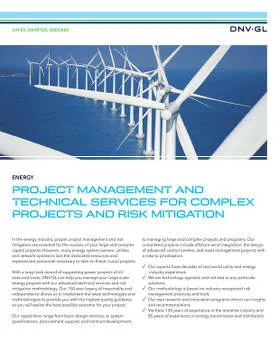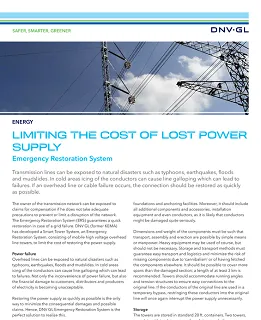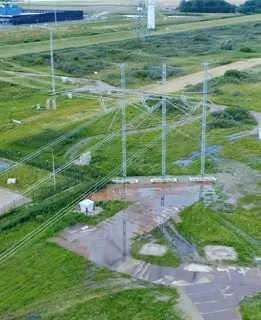Arc-flash risk assessment
DNV’s tailored approach towards arc-flash risk assessment and mitigation
An arc-flash is an explosive release of energy which happens during a fault in a low or medium voltage switchboard such as can be found in most factories, hospitals and other installations. Such events are rare, but they can pose a real risk of injury or death to anyone working close by. These risks include temperatures hot enough to melt or vaporize metallic conductors, bright light, extremely loud noise and a sudden increase in pressure, which can result in burns, loss of sight and hearing, and in the most extreme cases, death.
Equipment specification, withstand and testing has been traditionally based on the electrical values (currents and voltages) present when a fault occurs. They have not focused on the potentially deadly physical effects of an electrical fault, such as heat, light and explosive pressure. Or the fact that fuses and relays can operate more slowly for arc-faults, resulting in a larger release of energy.
Awareness is growing within Europe about the hazards posed by arc-faults within electrical switchgear, backed up by changes in standards for operation of electrical installations (EN 50110, and NEN3140 & 3840 in the Netherlands in particular). Recent changes in standards require risk assessment for electrical installations. There are, however, no European guidelines or standards on how to quantify the risk posed by arc-flash events.
America is ahead of Europe in its awareness of the evaluation, management and mitigation of these hazards. This awareness is backed up by technical guidelines, legislation and standards (such as IEEE 1584 & NFPA70E). At DNV we help our customers in improving their understanding of how to evaluate the risks. And we notice that a tailored approach is needed, rather than just blindly applying the American standards.
We have the expertise to carry out risk assessments, and the knowledge to apply worldwide “best practice” in a practical, pragmatic way. Our approach to the risk assessments can be summarized as follows:
- Information gathering. The first step is to gather all data necessary to evaluate the potential hazards posed by arc-flash events. Preferably this will include a site visit to carry out a visual inspection of the equipment and gather (and validate) relevant data. This will be carried out by persons with enough experience of electrical installations to give a professional opinion on the safety and integrity of the installation. In order to ensure a methodical and repeatable approach a questionnaire is provided (in Appendix A) for data gathering. Sufficient information must be gathered from the site to allow reliable calculations, and it should be confirmed that the received information is correct and up-to-date.
- Calculations. In the second step an evaluation of the maximum arc-energy should be carried out. A short-circuit study is carried out in line with IEC 60909-0, and the results of this provide the inputs needed to apply the method outlined in Section 4 of IEEE 1584. The worst case energy levels that could be associated with an arc-flash event at every switchboard are determined for every operating scenario.
- Risk Assessment. The potential severity of injury is considered based on the calculations from step 2, and a consideration of how the switchgear is used in a particular operating situation. The situations assessed must include all works which take place in the vicinity of the switchboards, which are not directly related to the equipment itself, such as cleaning or the changing of lightbulbs. Where the risk is determined to be unacceptable, DNV can propose strategies for reducing the level of, and exposure to risk.
A common misconception is that Arc-Flash studies deal with the management of the risk using Personal Protective Equipment (PPE). This is not the case, either in the standards themselves or in practice. The preferred mitigation strategies are to remove the risk by avoiding live working altogether (where possible), reduce the severity (faster relay settings, use of additional relays working on both light and over-current) or reducing the exposure (find safer ways of operating or maintaining the equipment, at a distance). It is important to understand the risk level when determining how it can best be managed. These risk assessments should be carried out by experts who understand not only how the calculations are applied, but also how the switchgear is operated and maintained. Consideration needs to be made at management/procedural level of how to manage to risk to personnel by working in the safest manner possible.
Training and awareness of the risks at all levels of workers in an organisation can help to keep everyone safe.
Contact us if you want to know more about our assessments, training or workshops.



